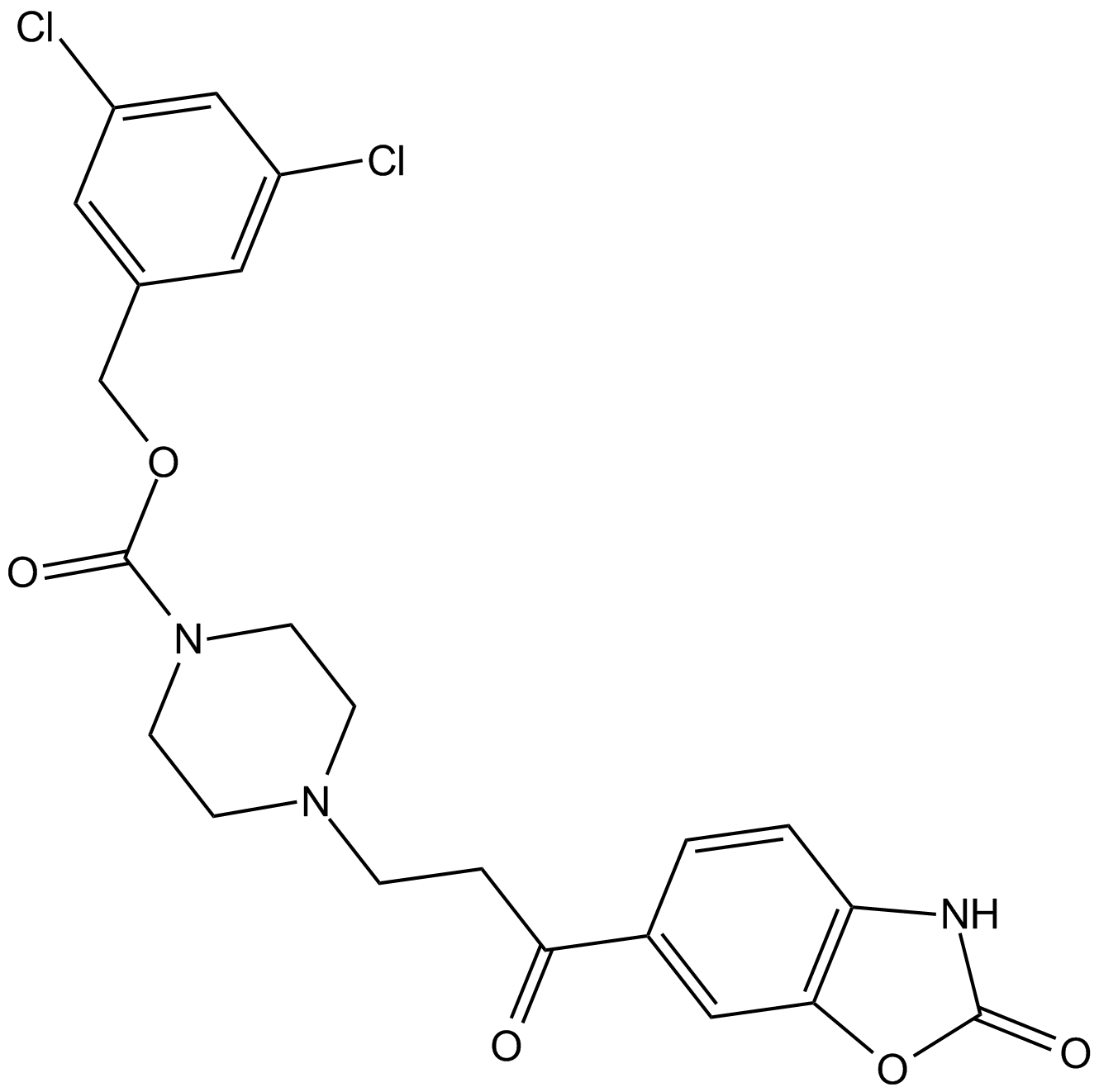PF-8380 |
| رقم الكتالوجGC14510 |
An inhibitor of autotaxin
Products are for research use only. Not for human use. We do not sell to patients.

Cas No.: 1144035-53-9
Sample solution is provided at 25 µL, 10mM.
PF-8380 is a potent autotaxin inhibitor with an IC50 of 2.8 nM in isolated enzyme assay and 101 nM in human whole blood.
PF-8380 also inhibits rat autotaxin with an IC50 of 1.16 nM with FS-3 substrate. Potency of PF-8380 is maintained when using enzyme produced from fetal fibroblasts used in combination with lysophosphatidyl choline (LPC) as a substrate. In human whole blood incubated with PF-8380 for 2 h, autotaxin is inhibited with an IC50 of 101 nM[1]. Autotaxin (ATX), an enzyme with lysophospholipase D (lysoPLD) activity, catalyzes the production of lysophosphatidic acid (LPA) from lysophosphatidylcholine (LPC). Pre-treatment of GL261 and U87-MG cells with 1 μM PF-8380 followed by 4 Gy irradiation results in decreased clonogenic survival, decreases migration (33% in GL261; P=0.002 and 17.9% in U87-MG; P=0.012), decreases invasion (35.6% in GL261; P=0.0037 and 31.8% in U87-MG; P=0.002), and attenuates radiation-induced Akt phosphorylation[2].
The pharmacokinetic profile of PF-8380 is evaluated at an intravenous dose of 1 mg/kg and oral doses of 1 to 100 mg/kg out to 24 h. PF-8380 has mean clearance of 31 mL/min/kg, volume of distribution at steady state of 3.2 L/kg, and effective t1/2 of 1.2 h. Oral bioavailability is moderate, ranging from 43 to 83%. Plasma concentrations increased with single oral escalating doses, but Cmax increased at a rate that is approximately proportional to dose from 1 to 10 mg/kg and less than proportional to dose from 10 to 100 mg/kg. PF-8380 exposures estimated by area under the curve are approximately proportional to dose and linear up to 100 mg/kg. Plasma C16:0, C18:0, and C20:0 LPA levels are measured immediately after collection. Maximal reduction of LPA levels is observed by the 3 mg/kg dose at 0.5 h with all LPA returning at or above baseline at 24 h[1]. Treatment with 10 mg/kg PF-8380 increases tumor-associated vascularity modestly by 20% (P=0.497). When compared to control, treatment of PF-8380 45 min before 4 Gy irradiation decreases vascularity by nearly 48% when compared to control (P=0.031) and by 65% when compared to mice that received radiation alone (P=0.011)[2].
References:
[1]. Gierse J, et al. A novel autotaxin inhibitor reduces lysophosphatidic acid levels in plasma and the site of inflammation. J Pharmacol Exp Ther. 2010 Jul;334(1):310-7.
[2]. Bhave SR, et al. Autotaxin Inhibition with PF-8380 Enhances the Radiosensitivity of Human and Murine Glioblastoma Cell Lines. Front Oncol. 2013 Sep 17;3:236.
[3]. Cao P, et al. Autocrine lysophosphatidic acid signaling activates β-catenin and promotes lung allograft fibrosis. J Clin Invest. 2017 Apr 3;127(4):1517-1530.
Average Rating: 5 (Based on Reviews and 30 reference(s) in Google Scholar.)
GLPBIO products are for RESEARCH USE ONLY. Please make sure your review or question is research based.
Required fields are marked with *




















